McDonald’s has Wendy’s, Walmart has Target, iOS has Android—these are just a few examples of two big names competing in the same space. Brand competition is nothing new and is often rather healthy. But, for it to be truly competitive, the competing parties must bring something of equal value to the table. So, what does this all have to do with Alaskan Road Truckers?
This ambitious new big rig sim seeks to plant a flag in territory that’s long been practically conquered by the likes of SCS Software and its long-standing portfolio of truck simulators. Today, SCS wields two sister sims, American Truck Simulator and Euro Truck Simulator 2 that each have been progressively improving over several years. Within that time, new challengers such as Alaskan Road Truckers have risen, but SCS’ position has yet to be toppled. It appears that’s for good reason; there’s still not much of a fight to be had here.
‘All bark, no bite’
Alaskan Road Truckers seems to want to occupy a space that’s being filled not just by SCS, but also that of Saber Interactive with its Runner franchise. Spun-off from Spintires, Saber has gone on to release MudRunner (2017) and SnowRunner (2020.) These driving sims show the other side of trucking, with a focus on navigating dangerous off-road environments.
Saber has crafted a beautifully complex physics that does a stellar job at simulating proper weight distribution, terrain deformation, and authentic off-road driving. On paper, Alaskan Road Truckers would seem to have a gameplay formula that fuses with on-road sims from SCS and with the off-road sims from Saber.
As alluded to earlier, Alaskan Road Truckers doesn’t quite match up to either.
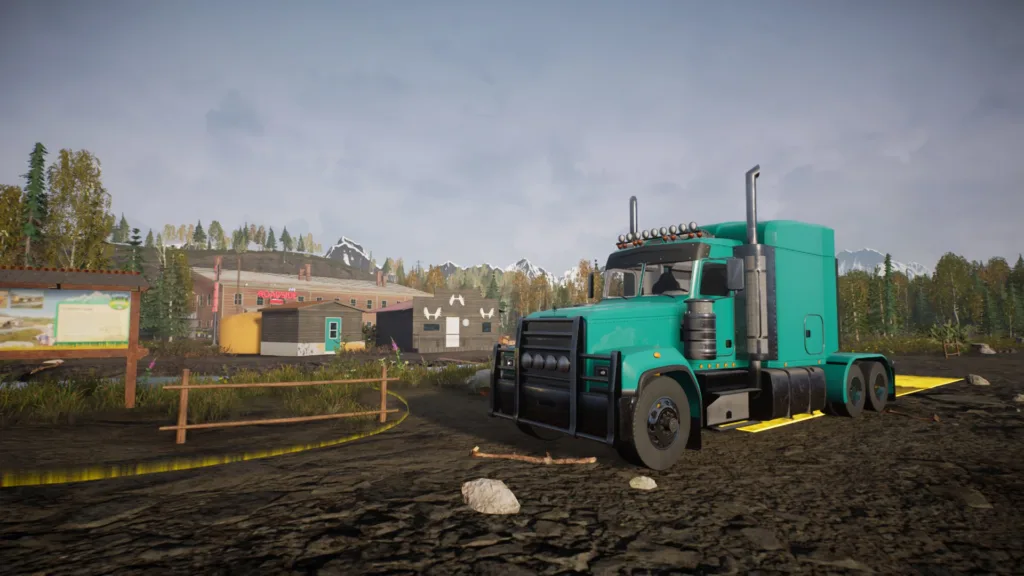
Attempting to take on the Last Frontier
The core of the sim, the driving mechanics, are perhaps its least impressive element. The starter truck feels exceptionally heavy. Admittedly, that should be a good thing, but what this translates to is very slow and wide turns.
There should be a nice middle-ground between feeling heavier than a standard car, but also not feeling like you’re trying to manoeuvre a cinder block with wheels. Very surprisingly, I discovered the keyboard steering to be better than that of using a gamepad; that’s the opposite of how it should be.
Steering sensitivity when using an analogue stick is too high and there’s currently no way to alter it. Proper, incremental adjustments are better made with the keyboard. Though, I still stubbornly stuck to using the gamepad and just trying to make it work. While I mostly managed, there were quite a few times where trying to make a sharp turn led to be careening off the road a little.
Sometimes, this happened due to the bad controls, but other times it was just the result of the shoddy AI traffic. Having relocated to New England in the past year, I’ve seen my fair share of horrendous driving and if I didn’t know any better, I’d reckon that the drivers here in the sim must’ve learnt from the New Englanders.
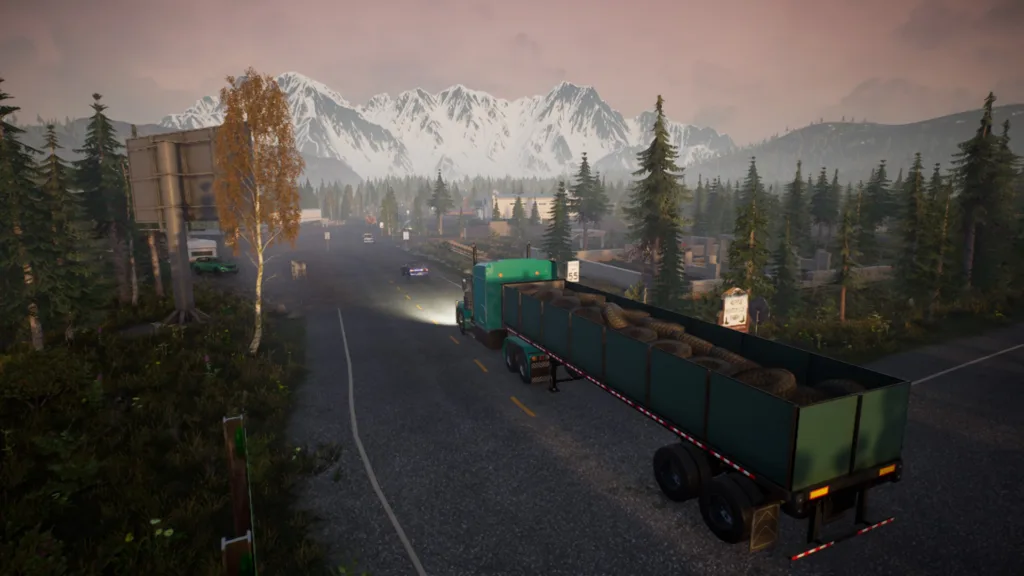
From getting brake checked, to cars going well under the speed limit, to just coming to completely random stops, driving with traffic here in Alaskan Road Truckers feels more treacherous than the weather hazards.
Continuing with the traffic problem, it’s further exacerbated by the game’s strange speed limit implementations. Short sections of the road near intersections will go from 55 MPH to just 15 MPH and with the AI traffic being so poorly coded, this is often what triggers the sudden, unnecessary stops. When they weren’t ruining my life, they’d also mess themselves up by getting stuck on terrain, crashing into signs and even into each other.
Shifting gears back to the topic of driving mechanics, however, here comes a reflection on the game’s representation of Alaska’s terrain. While the state’s fairly moderate road system is somewhat represented here, you’d be hard-pressed to find much of a difference in driving conditions at any given time.
A good chunk of the roads in the sim are paved, but there are also what should be the more technical moments where you encounter unpaved sections. Truthfully, I observed no real difference in handling.
Even after snow fell and the road was blanketed, my truck just continued on without any extra consideration.
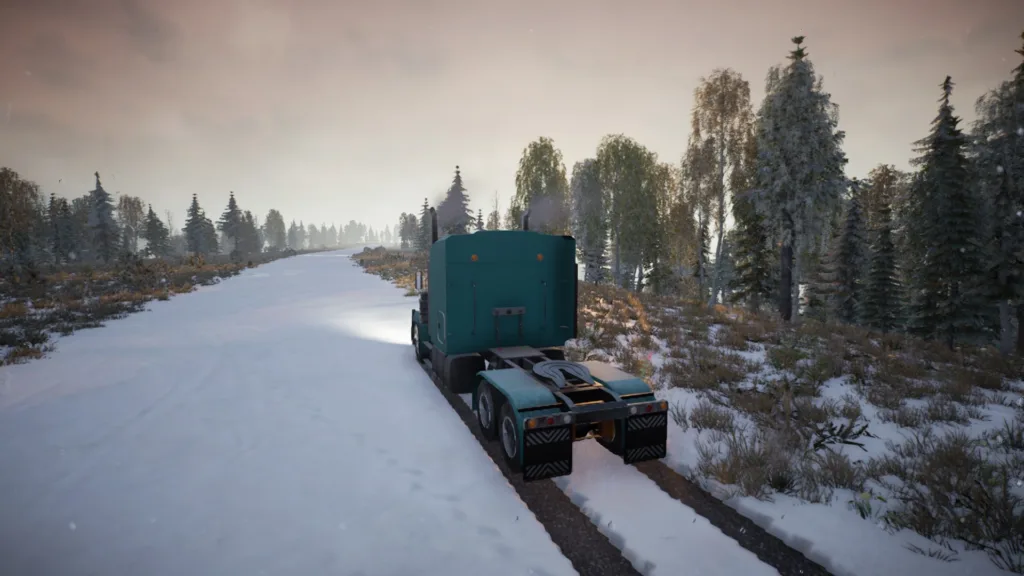
Seeing that the game’s (pretty basic) customisation/upgrade system allows you to pick between sets of tires with different attributes, including those that are supposedly meant to perform better in certain conditions, one would think the driving mechanics would be able to reflect all of this. But alas, it’s all incredibly rudimentary. Even if the road surface is merely wet from rain, you won’t experience any more difficulty driving than usual.
An accurate representation of these very different driving conditions should make up a huge part of the game’s gameplay formula, so its absence makes most of the experience feel incredibly hollow. However, this isn’t the only area where the game is lacking.
It’s the little things
It wasn’t until noticing the absence of certain smaller details in Alaskan Road Truckers did I appreciate their presence in the SCS sims. For instance, in those titles, before setting off to take a job, you get a rundown of the goods to carry and their weight. Heavier loads will warn you to make sure your truck is up to the task before proceeding.
Here in Alaskan Road Truckers, while you do get a similar briefing for cargo types, there’s never any mention of weight. It should come as no surprise that it never really seemed to matter, given how we just discussed the fairly simple driving mechanics that the game possesses.
The omission of this isn’t just a fact of mere missing lines of text, it’s reflective in the gameplay. If I need to haul a tanker trailer filled with fluid, its density should be felt versus a trailer of used tires, for instance.
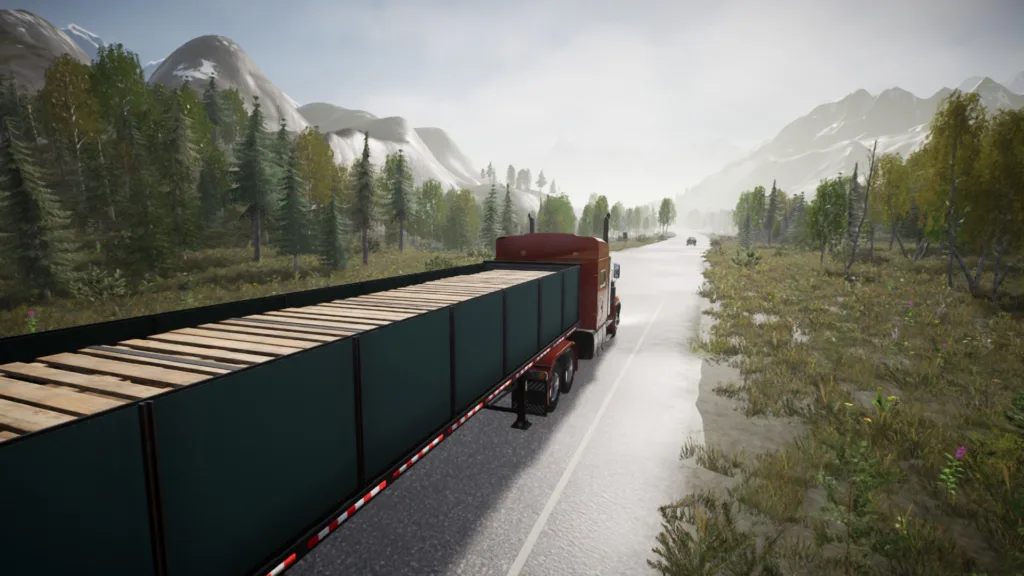
It should also go without saying that the Runner titles do perhaps the most fantastic job at reflecting weight differences and the intricacies that come with transporting different cargo. The risk of tipping a log trailer is higher due to needing to then have to pick them all up, versus a tanker that has a cap.
None of these differences matter in Alaskan Road Truckers.
On a similar note, your truck’s power doesn’t seem to make much of a difference here. While in the beginning your available license only allows you to move certain types of cargo, there’s nothing that ever seems to factor in the actual capabilities of your truck.
Therefore, as you complete missions and slowly build your funds and XP, there’s hardly much incentive to put effort into reaching for better equipment. This is a fundamental pillar of any driving game; start small and work your way up. The lack of rewarding progression is head-scratching, to say the least.
Earning XP allows you to unlock aspects of various skill trees, although they mostly include minor buffs such as less fuel consumption, for instance. This is similar to that of the truck sims of SCS, though earning XP here in Alaskan Road Truckers seems to take longer.
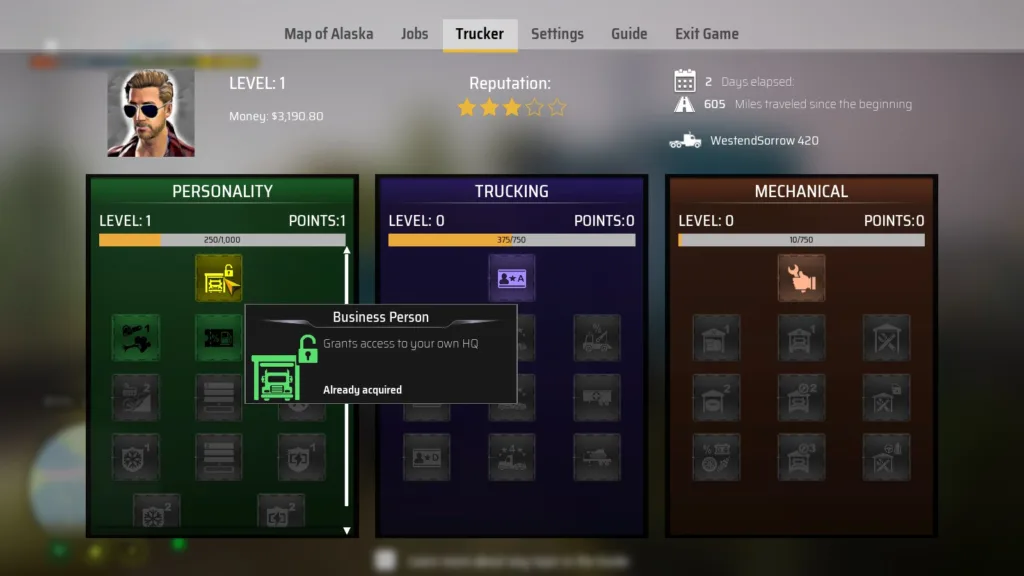
As for the use of funds, while a single job will certainly net you a few thousand upon completion, it’s fairly easy to have a lot of it slip away when needing to make repairs and buy supplies for yourself and your truck. Here’s where, at the very least, Alaskan Road Truckers does show the brightest of its promise.
‘Credit given where it’s due’
Alaskan Road Truckers’ stand out feature is just that: you’re allowed to stand. Not just that, your character can walk around, use their hands, and interact with objects. Rather than being confined to the cabin and merely taking care of non-driving tasks through a series of menus, this game actually invites you to pump gas yourself, fix broken parts on your truck, and stuff your invisible face with necessary food to keep hunger at bay.
Having to manage these more minor tasks in a pragmatic way is a breath of fresh Alaskan air. For whatever reason, so many driving sims keep the action centred on the vehicle and your character so often is the vehicle, essentially.
That’s why when you can actually flick the door open and touch virtual grass, it’s interesting to see just how much you’re able to do in that state.
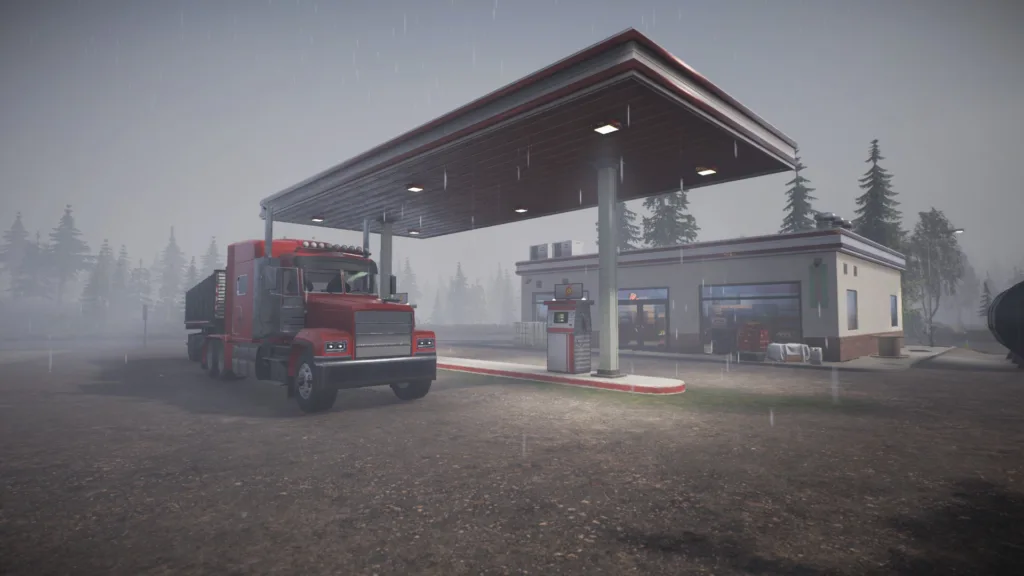
I do enjoy the hands-on aspect of this title and none of it really seems to get in the way of the rest of the experience. You need to keep your character well fed, warmed, and rested.
Bodily damage will even be taken from a crash, meaning you’ll need to both eat and perhaps even take meds to heal properly. All of this breaks up the monotony of simply just driving from point A-to-B.
Alas, my praise for Alaskan Road Truckers can only go so far because anytime I was done manoeuvring about on foot, it was back to slogging through everything else on the road.
Bugs aplenty, and weird decisions galore
If the poor driving mechanics and janky AI weren’t already egregious, there’s a lot of other aspects where this game has issues, from technical bugs to odd design choices. Here are just some examples of what I’ve encountered.
Sometimes while fixing a part, an annoying wrench sound effect would keep looping long after the task was done.
When taking a break from one of my sessions, I saved and exited the game with completely regular weather. When I booted it up again, time was the same, but the world was blanketed with snow out of nowhere.
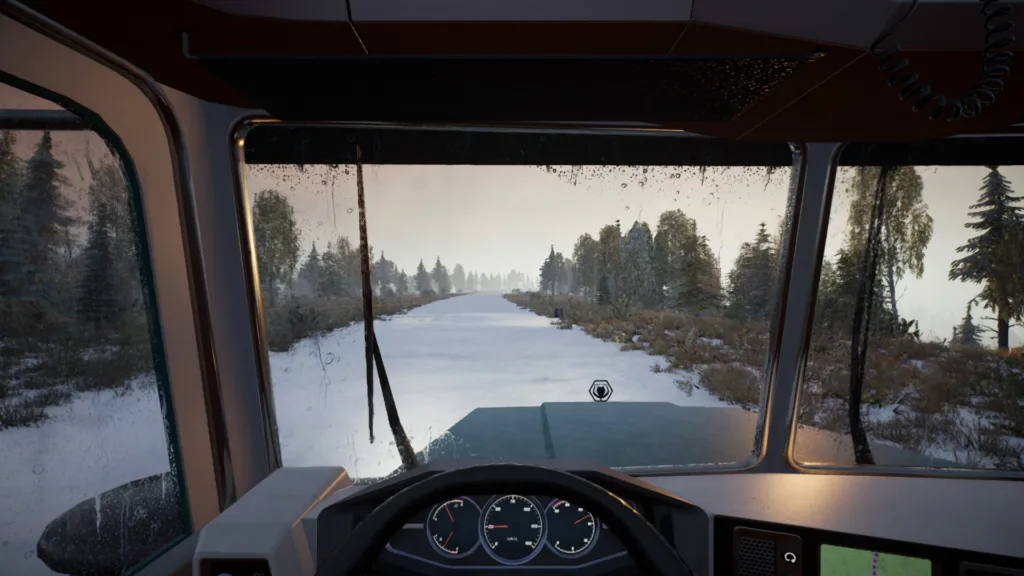
The only NPCs in the game’s drabby map are odd-looking models that are Job Managers you must speak to, or store clerks. I say “odd-looking” because they all seem to be pulled from a pack of pre-created models and their outfits don’t fit the theme or conditions of the world they live in. This segues into the world design itself.
While the look and feel of virtual Alaska in this title is somewhat accurate given the aforementioned ruggedness of the mostly nature-covered state, Alaskan Road Truckers is by no means trying to go as in-depth as what the talented scenery designers at SCS have been putting together.
Various Points of Interest are even littered about the map for you to stop and take pictures of, but none of them were anything to truly write home about. Beyond that, just the game’s general world design seemed flat and dull.
I can’t quite put my finger on it, but it all came off as lacking depth to me. Perhaps it could be due to a lack of elevation, or the look ‘sameness’ across much of the scenery. Either way, there just isn’t much visual flavour on offer here.
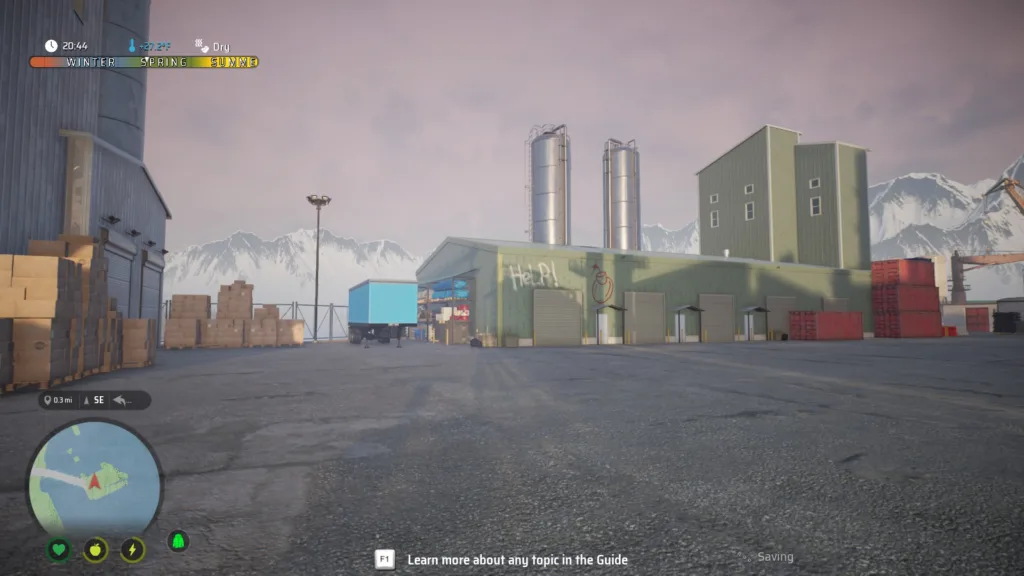
Alaska in real life is gorgeous and while there were a few tranquil moments where I appreciated the game’s attempt at beauty, I often just felt I was looking at a crude, dollar store brand version of what’s ‘supposed’ to be present.
Getting around this hollow rendition of Alaska is also a bit of a doozy considering that the minimap has zero icons. Confusingly, you have to open up the main map to see where everything is and set a course to it.
For instance, I mentioned earlier how many truck repairs can be done while on-foot, but major repairs will still call for taking your truck to a shop.
As the map shows, there are only about four truck workshop locations across the map in all, however, including your HQ. Considering they’re vast distances between each other, here’s hoping you don’t hit a randomly stopped vehicle too hard and need a major repair while making a delivery.
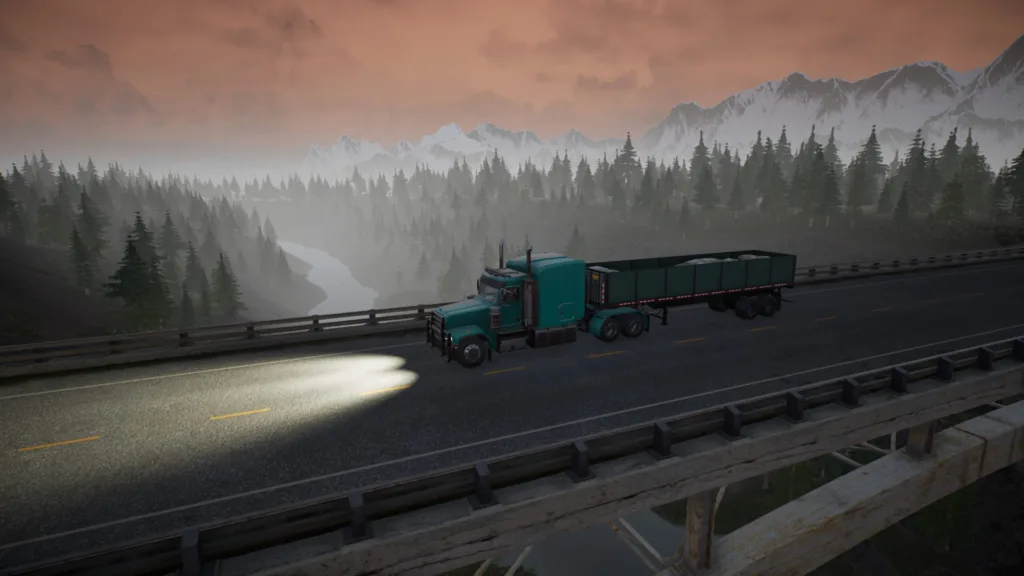
While roadside assistance can be called to fetch your truck in emergencies, that comes at a steep fee and with the added inconvenience of having to start a new journey (perhaps even covering ground you just drove through.)
Getting around the potholes
With all of the problems I just mentioned in mind, it is notable that despite its release only a few days ago, the game has already received three updates addressing issues found by players. A fourth one even dropped just before publication of this review.
On one hand, this bodes well for squashing the plethora of bugs I’ve mentioned and hopefully revamping the lackluster design choices. Additionally, the devs have already promised to outfit the game with more content in the near future.
These efforts so far do provide hopeful prospects for Alaskan Road Truckers, but first impressions certainly do matter. As is always the case, this game releasing in such a semi-broken and buggy state is just confusing.
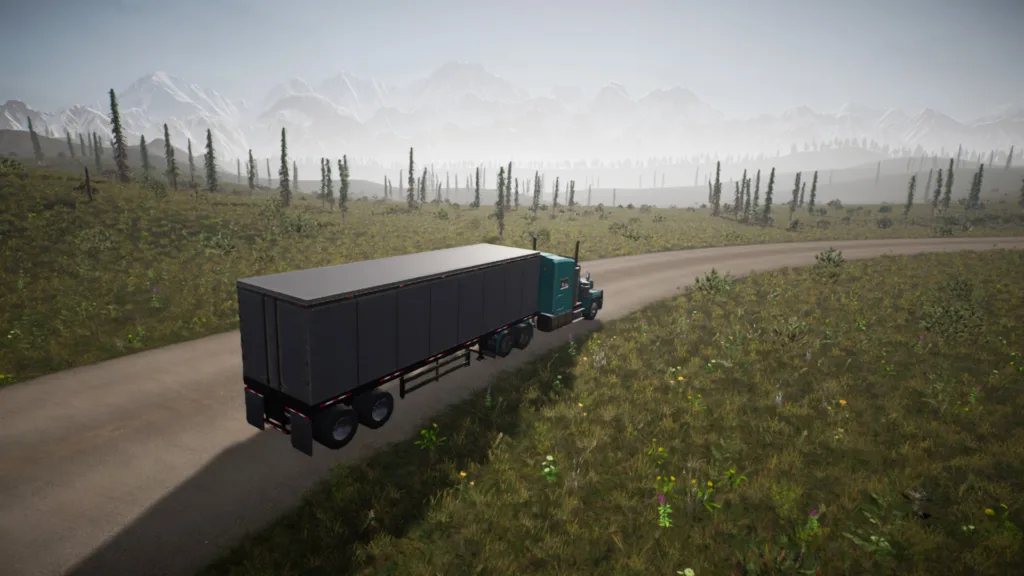
For myself, I wanted to complete a full in-game year to get a proper perspective of the whole experience. With all the issues I just mentioned, especially once being completely let down by the random snowfall mentioned earlier, after a half-dozen hours of playing, I figured I’d seen enough.
While Alaskan Road Truckers is far from being the worse title to hit the truck sim genre, it does come off as over-promising while under-delivering. There’s room to turn things around and forge a better path, but that’s not the ideal way to try and build a following around a new product.
SCS and Saber Interactive both occupy their respective corners of the truck sim genre with great force, and each have a dedicated fanbase that proves that. Their sims aren’t perfect, but they’re certainly very well put together.
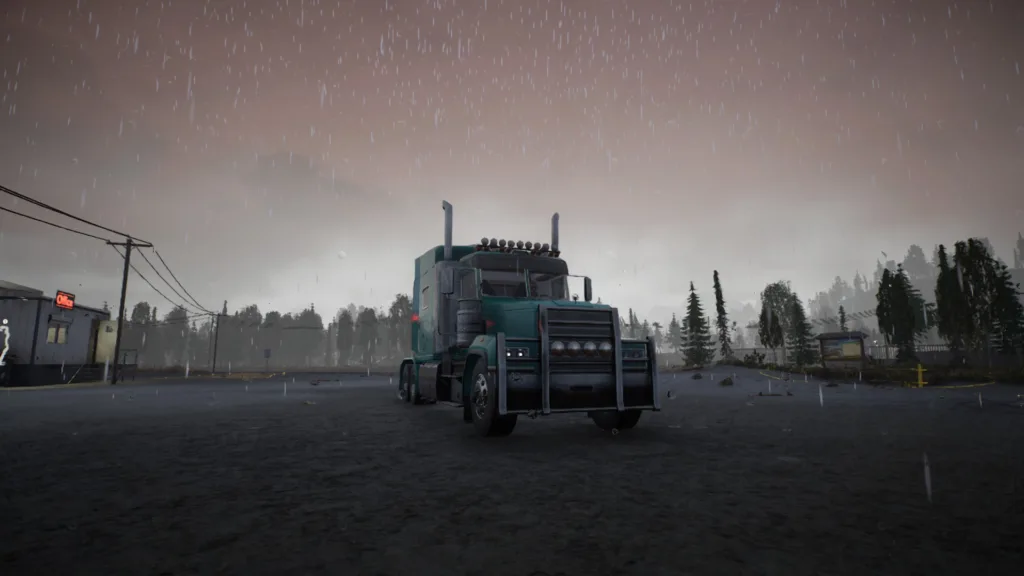
Why would any player bother looking elsewhere or waiting for something new to ‘get gud’ if the better offerings are already ripe for the picking?
I’ve said it once here before and I’ll say it once more: Road Studio has its work cut out for it.
There’s potential here with Alaskan Road Truckers and I hope it’s built upon sooner rather than later. For the time being, this truck sim is better left in the shed.
Alaskan Road Truckers: Alaskan Road Truckers has some strokes of promise, but it often under delivers on those promises. It has the makings of what could be an exciting and engaging truck sim experience. Yet, at least in its current form, it's more of a bore and a chore. – A.K Rahming




